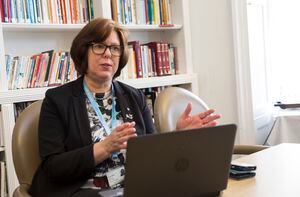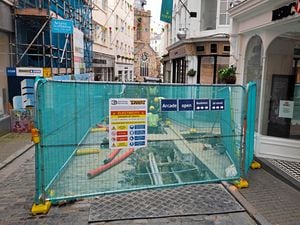Islanders among victims of NHS blood scandal
GUERNSEY people are among the thousands of victims affected by the NHS contaminated blood scandal.

An inquiry has opened in London to look at how approximately 5,000 people with haemophilia and other bleeding disorders were infected with HIV and hepatitis viruses through the use of donated blood in the 1970s and 1980s.
Dr Nicola Brink, the director of public health, said: ‘Health & Social Care provides care for people living with hepatitis B, C and HIV in Guernsey and Alderney. We are aware of patients that have received blood or blood products sourced from outside of Guernsey who have been affected by this.’
She stressed that historic blood transfusions given in the island were clean and not in any way connected to the UK scandal.
‘We are not aware of any patients who received their infection from a blood transfusion they received in Guernsey.’
It is not being revealed how many people living locally were affected by the UK controversy because of patient confidentiality and privacy protocols.
The two-year inquiry, which has just begun hearing the stories of victims, is investigating what has been called the worst treatment disaster in the history of the NHS.
It is estimated that about 5,000 people with haemophilia, a genetic condition that prevents blood from clotting properly, were infected when they were given blood products to help their blood clot.
The treatment was introduced in the early 1970s. Before then patients had faced long stays in hospital to have blood transfusions, even for minor injuries.
Britain was struggling to keep up with demand for the treatment and so supplies were imported from the US, where much of the human blood plasma used to make the product came from donors such as prison inmates, who had sold their blood.
The blood products were made by pooling plasma made from up to 40,000 donors and concentrating it.
Some people who had blood transfusions after an operation or childbirth were also exposed to the contaminated blood and it’s estimated that as many as 30,000 people may have been infected.
By the mid-1980s the products started to be heat-treated to kill the viruses, but it is widely thought by health professionals and victims that some contaminated products remained in circulation.
Screening of blood products began in 1991 and, by the late 1990s, synthetic treatments for haemophilia became available, removing the infection risk.
Dr Brink added that if anyone has any worries about blood transfusions received outside of Guernsey they should contact the Orchard Centre.
‘We continue to provide the highest possible standard of care for people living with hepatitis B, C or HIV in Guernsey and Alderney having recently approved the use of the new and improved hepatitis C treatment locally.
‘People living with HIV in Guernsey and Alderney have access to a full spectrum of treatment at the Orchard Centre.’





